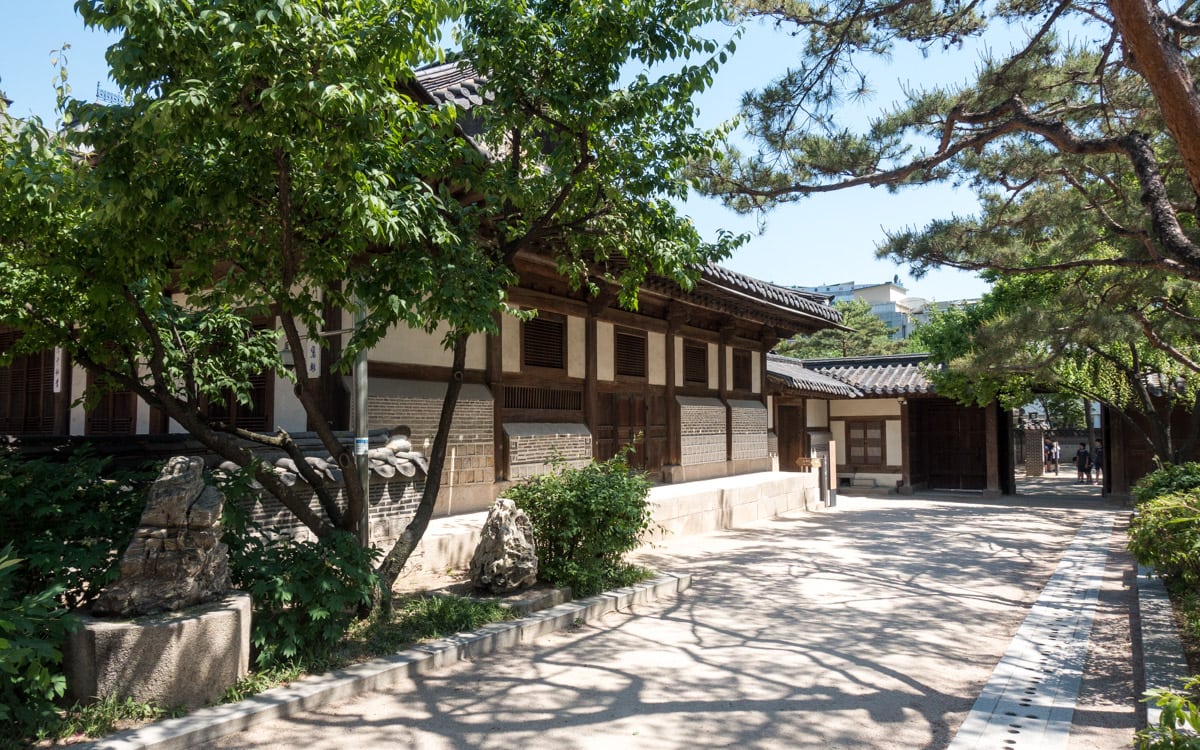
Unhyeongung Palace, also known as Unhyeongung Royal Residence, is a small palace located in the center of Seoul. Gojong, 26th king and emperor of Korea, was born at Unhyeongung Palace on September 8, 1852. He lived here until age 12 when he ascended to the throne. The residence was owned by Heungseon Daewongun, the father of Gojong.
Heungseon Daewongun lived here for most of his life. His time was spent handling business and political issues. During his free time he would paint, read, and write.
Closed on Mondays.
Admission is free.
Ordered by Queen Mother Jo, the residence was renovated into a grand complex with four gates. The buildings created were modest in design with mostly natural wood. Though not as grand as the other palaces in Seoul, Unhyeongung is a fine representation of the homes of noblemen during the late Joseon Dynasty period.
Norakdang Hall, a women’s residence, and Noandang Hall, the men’s residence, were built in 1864. This was during the first year of Gojong’s rule. Irodang Hall, an exclusive residence for women, was built five years later in 1869.
During the Joseon Dynasty, the palace was a center or neo-Confucian thought, which was the idea of basing civil progress on merit rather than lineage.
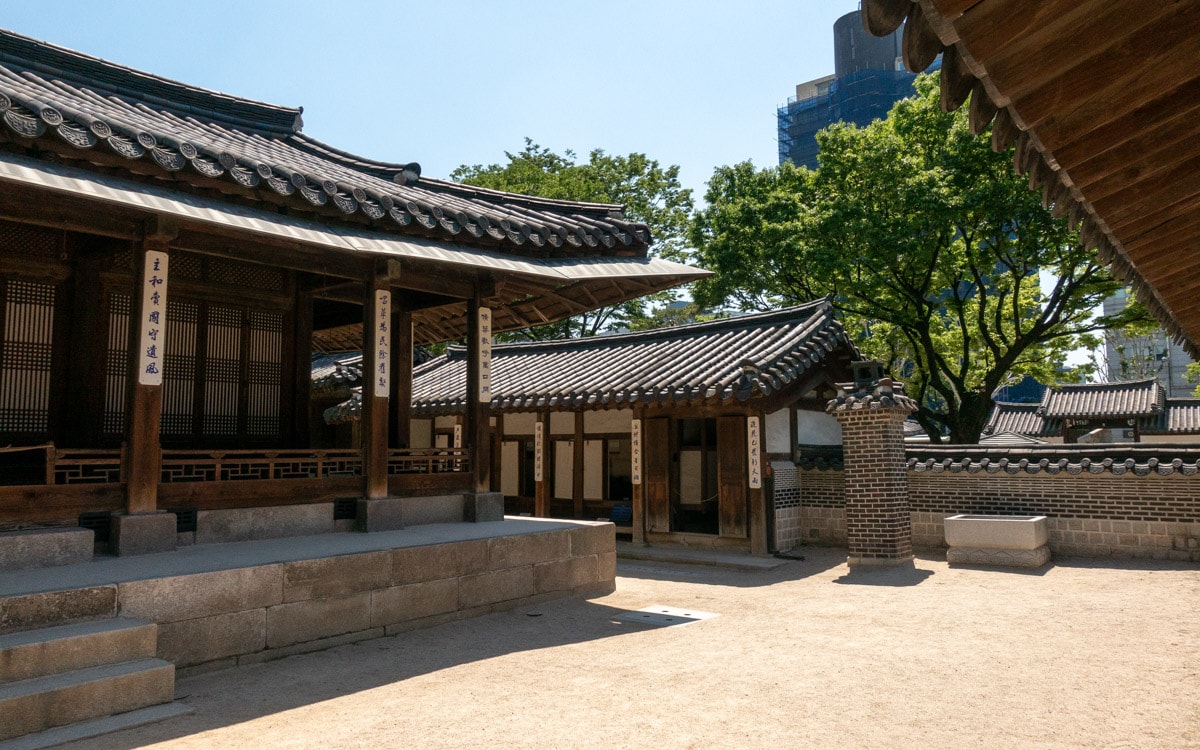
On March 21, 1866, King Gojong and Empress Myeongseong (Queen Min) were married on the grounds of the palace. Twice a year, a reenactment of the wedding is held here. The reenactment ceremony is a great way for visitors to learn about the lifestyles and history of the Joseon dynasty and the royal family.
Following the death of Heungseon Daewongun, the residence was inherited by his eldest son Yi Jaemyeon. During the Japanese occupation of Korea, the complex was taken from the relatives of Daewongun. It was not returned until 1948. Much of the palace was destroyed or damaged during the Korean War. In 1993, the palace and buildings were sold to the government of Seoul, who spent three years renovating the palace to some of its former appearance.
Today, the palace is much smaller than it was originally. Duksung Women’s University now occupies some of the former grounds of the palace.
Many of the interiors of the reconstructed buildings have also been refurbished. Some of them feature mannequins wearing hanok, a type of traditional Korean dress. This gives visitors a better understanding of what life was like at the palace during the Joseon Dynasty.
Unhyeongung Palace is located near Insadong in the business district of downtown Seoul. The palace grounds and its charming wooden buildings are a great place for a stroll as most tourists like to focus their time on some of the other larger palaces in Seoul.
Table of Contents
What to see at Unhyeongung Palace
Irodang Hall
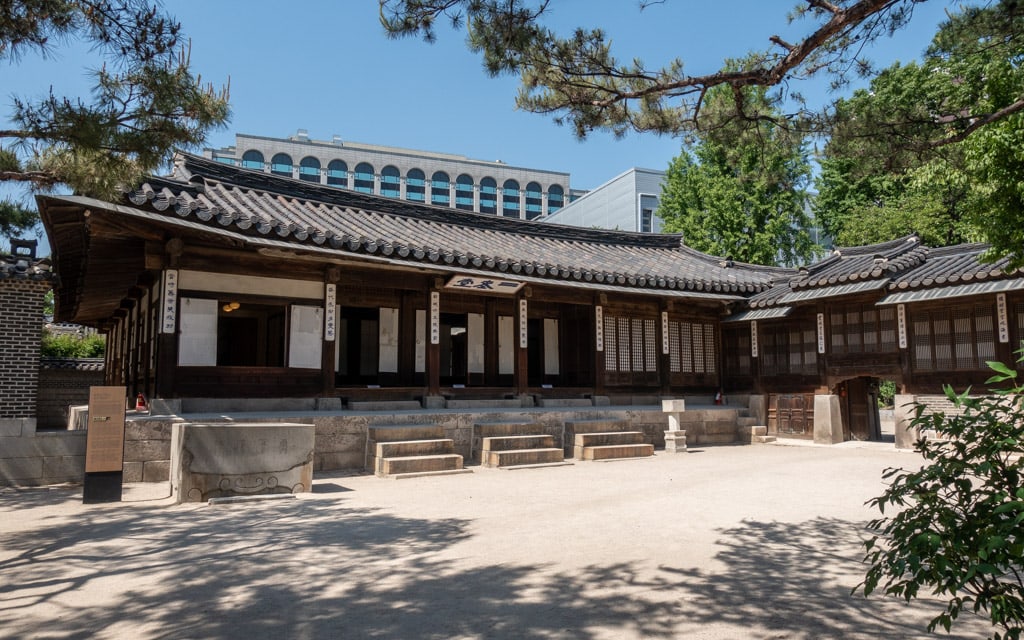
Irodang Hall was the main building of the palace and the exclusive residence for women. The wife of Yi Haeung, or Heungseon Daewongun, lived here. He ran the day to day affairs of the royal residence from this location.
Construction on Irodang was completed in 1869. It was built as the house of Heungseon Daewongun and his wife after the marriage of King Gojong and Empress Myeongseong (Queen Min).
The structure features eight rooms in the front and seven rooms in the side.
The shape of the hall along with its tall steps kept intruders out along with men who were strictly forbidden from entering.
An old well can be found outside of the building just across the open yard. A path with rock structures that resembles various animals leads to nearby Norakdang, another residence for women.
Noandang Hall
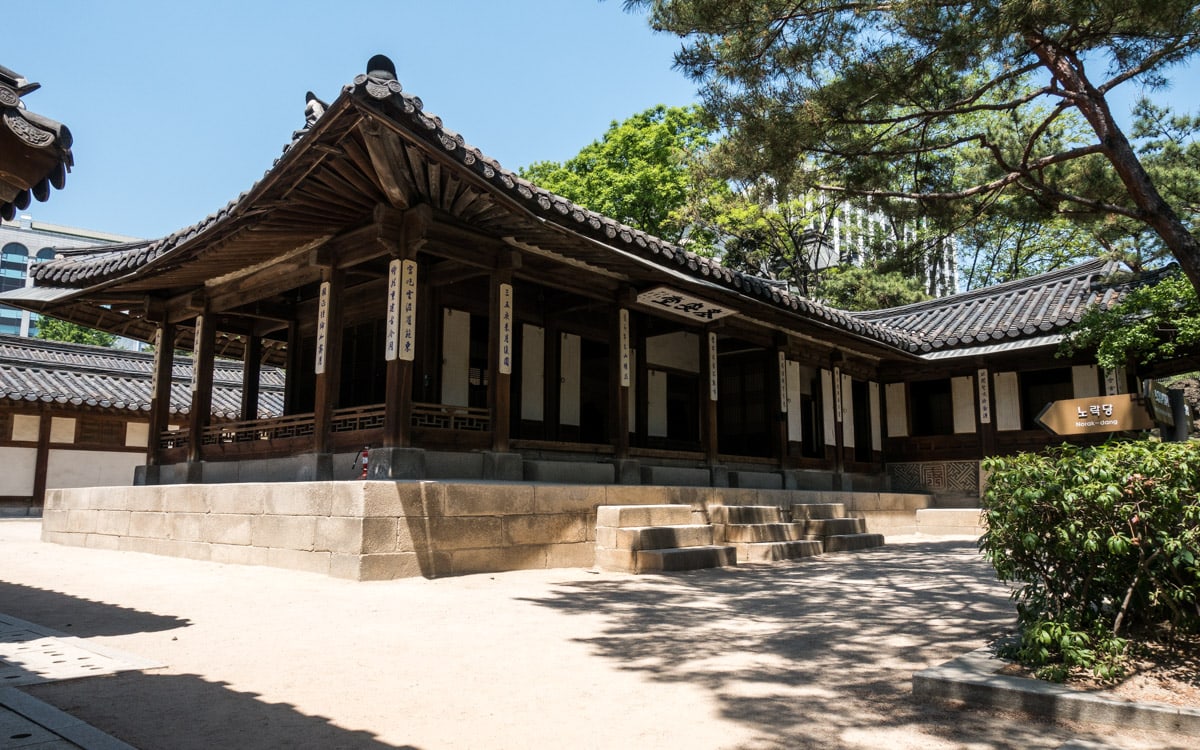
Noandang Hall served as the men’s residence at Unhyeongung. Here, Yi Haeung, or Heungseon Daewongun, read, wrote, painted, rested, and met with guests. The word Noan means old man who is comfortable and at ease. Men felt relaxed and at ease while in this building.
Construction on Noandang, along with Norakdang Hall, was completed in 1864 during the first year of the reign of King Gojong. Gojong was the twenty sixth and last king of the Joseon Dynasty and also the first emperor of Korea.
The building features a traditional Korean tile roof. There are six rooms in the front and three rooms on the side. Beams attached to the edge of the roof functioned as awnings. This feature shows architecture styles in the 19th century.
The hall was important for other activities other than leisure. Heungseon Daewongun, whose son was the emperor, handled business and political matters from this location.
During his free time, Heungseon Daewongun would paint here. He mostly enjoyed painting scenes of orchids.
Cheonhajangan was the right hand man and bodyguard of Heungseon Daewongun while he stayed at the hall. His duties included security and collecting information about political enemies.
The original tablet that hung here is now on display at the Seoul Museum of History.
Nearby is an exhibition hall with relics from the life of Heungseon Daewongun.
Norakdang Hall
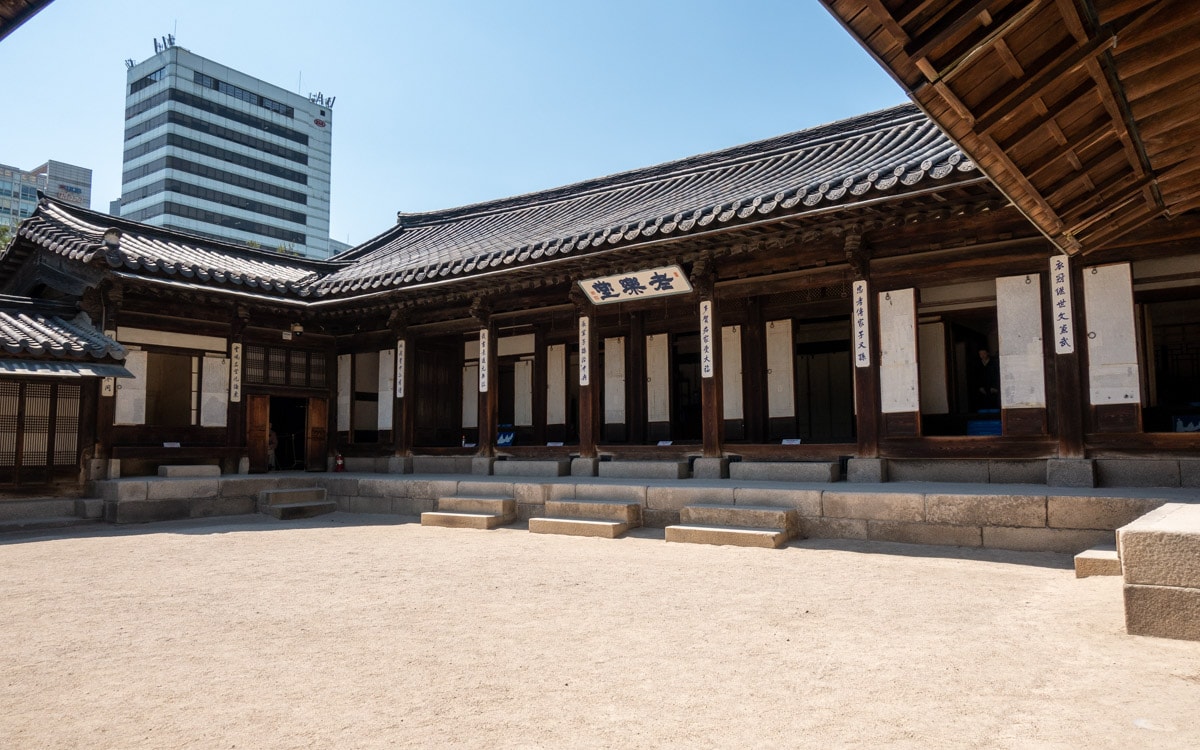
Norakdang Hall was one of the residence halls for women at Unhyeongung. The other was Irodang Hall. This is the largest building at Unhyeongung. Construction on Norakdang, along with Noandang, was completed in 1864 during the first year of the reign of King Gojong. Gojong was the twenty sixth king of the Joseon Dynasty and the first emperor of Korea.
The hall features ten rooms in the front and three rooms on the side. Lattice, or criss-crossed patterns, have been well preserved. Horizontal roof beams known as purlins feature a depiction of a dragon.
A kitchen can be found inside which was used to prepare, cook, and serve food for the many special events and ceremonies held here.
Many important ceremonies were held here including royal birthday celebrations and weddings. It was here on March 21, 1866 that King Gojong and Empress Myeongseong (Queen Min) were married. This ceremony is reenacted each year during the spring and fall.
On the ceiling are decorations of checkered shaped lotus flowers. It was written that this building was so lofty that it was only 15cm (5.9 inches) from heaven.
Sujiksa
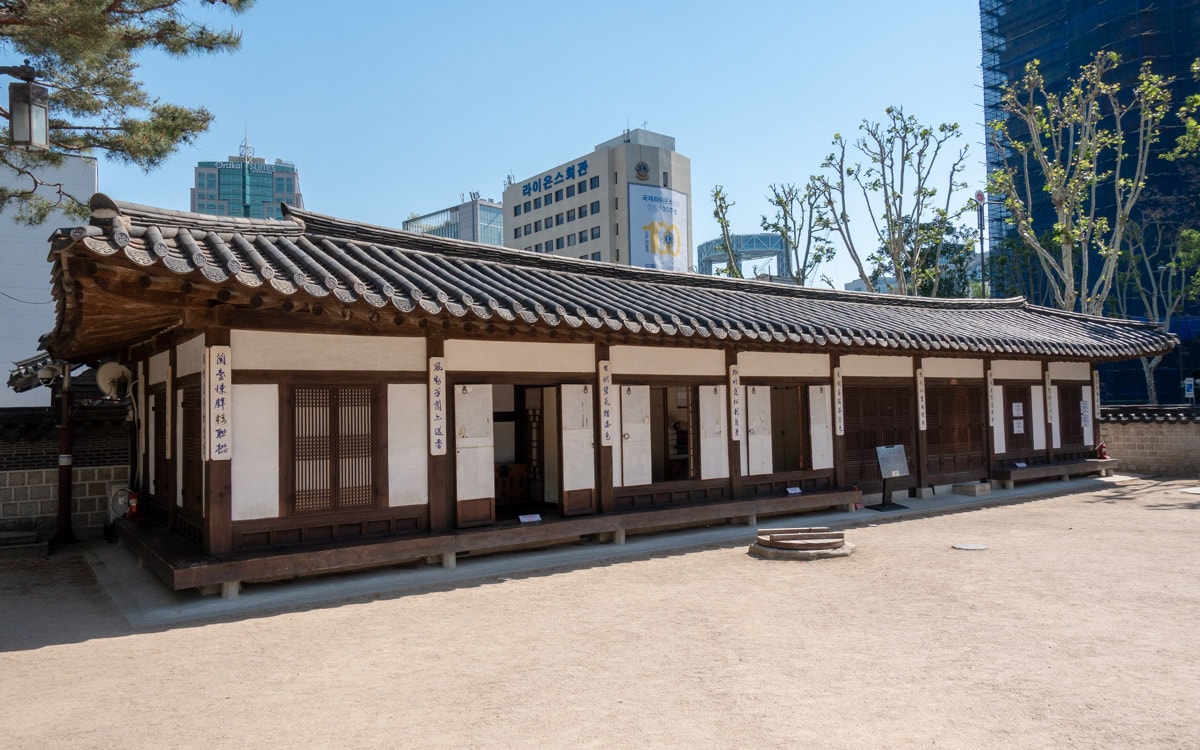
Sujiksa, located east of the main gate, is the building where stewards, guards, and maintenance men were housed. Inside the structure are artifacts such as clothing, furniture, and other daily items. There artifacts were used by security, stewards, guards, and maintenance while at the palace.
The royal residence at a time was much bigger and required a larger amount of guards and soldiers for the protection of Heungseon Daewongun. He needed more protection as he grew powerful after his son, Yi Myeong-bok, better known as Emperor Gojong, ascended to the throne in 1863.
Unhyeongung Palace Hours
November-March : 9:00-18:00
April-October : 9:00-19:00
Ticket office closes 30 minutes before closing time.
Closed on Mondays and Tuesdays following national holidays.
Admission
FreeHow to get to Unhyeongung Palace
Option 1
Take Subway Line 3 to Anguk Station (Exit 4).
Option 2
Take Subway Line 5 to Jongno-3-ga Station (Exit 4).
Map
Additional Resources
Viator
Viator is a popular online platform that helps travelers book tours, activities, and unique experiences worldwide, including in Seoul. It connects users with a wide selection of options, such as sightseeing tours, cultural events, outdoor adventures, and more, all offered by local providers. Travel easily, with free cancellation and flexible payment options, making Viator an excellent choice for stress-free tour booking.
Book Recommendations
While The Seoul Guide provides plenty of information about traveling to Seoul, sometimes it helps to bring a book with you on your journey. Want to visit Gwangjang Market, hike Bukhansan National Park, visit an ancient palace, or sing karaoke all night long? The book I always recommend is Fodor's Seoul, which provides expert recommendations including sights to see, restaurant reviews, maps, and essential trip-planning information for everything related to Seoul.
Learn more about book recommendations
Rakuten
Save money while exploring Seoul with Rakuten cashback program. By booking hotels through Rakuten, visitors can earn cashback rewards and enjoy significant savings. Exclusive partnerships and deals make stays in Seoul more affordable, freeing up funds for attractions, dining, and other experiences. I use Rakuten for cashback on all of my hotel stays in Seoul.
If you sign up using the link below, you will get $30 cashback after your first purchase over $30.
Klook
Klook is a reliable online platform offering discounted tickets and reservations for attractions and services in Seoul. It covers theme parks, museums, transportation, WiFi, tours, and more. Travelers can save time and money by booking through Klook's user-friendly interface, with secure transactions and helpful customer support.
If you sign up using the link below, you will get $5 off your first order.
Learn more about KlookLast Updated on Jul 5, 2023